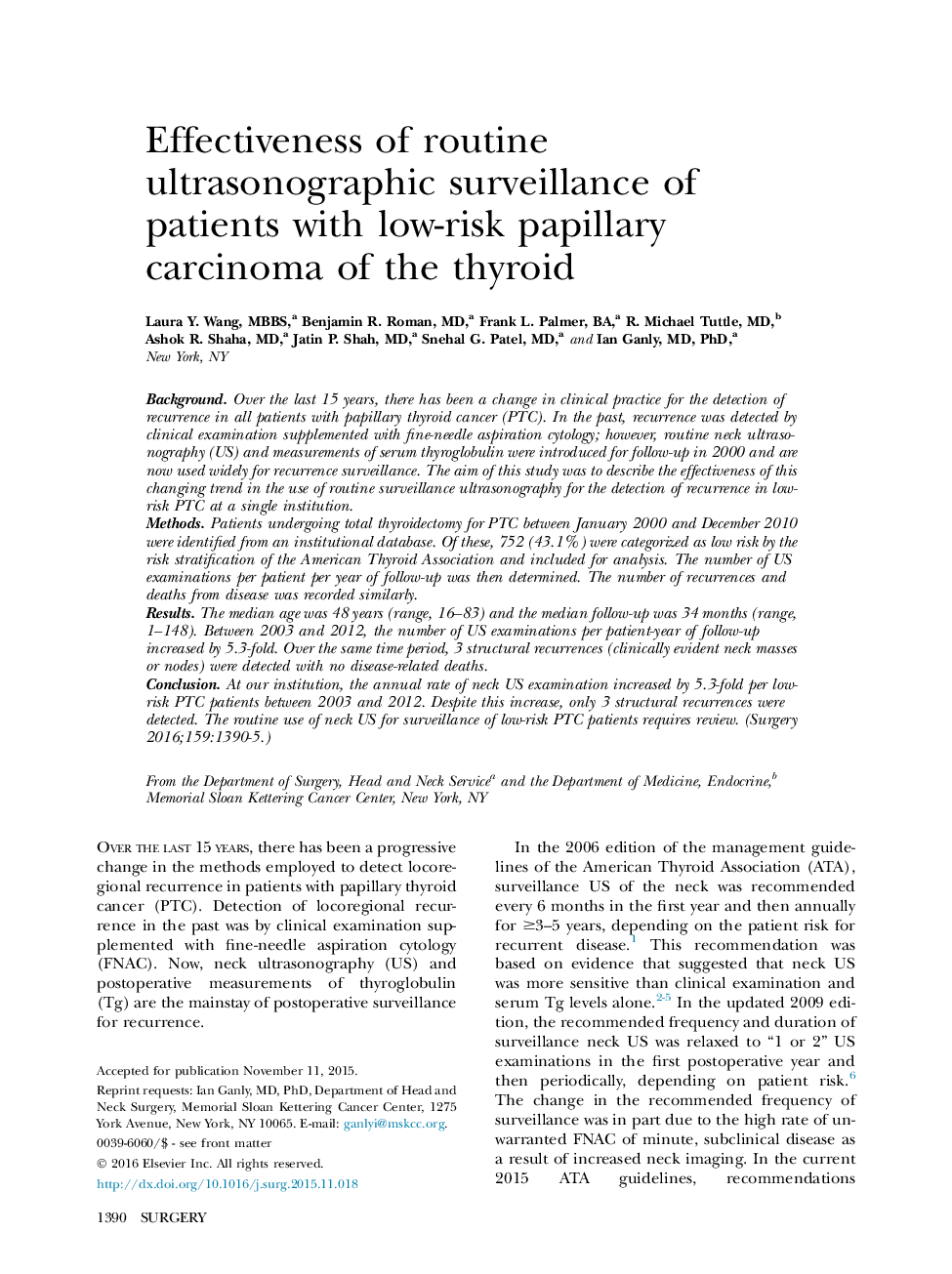| Article ID | Journal | Published Year | Pages | File Type |
|---|---|---|---|---|
| 6255070 | Surgery | 2016 | 6 Pages |
BackgroundOver the last 15Â years, there has been a change in clinical practice for the detection of recurrence in all patients with papillary thyroid cancer (PTC). In the past, recurrence was detected by clinical examination supplemented with fine-needle aspiration cytology; however, routine neck ultrasonography (US) and measurements of serum thyroglobulin were introduced for follow-up in 2000 and are now used widely for recurrence surveillance. The aim of this study was to describe the effectiveness of this changing trend in the use of routine surveillance ultrasonography for the detection of recurrence in low-risk PTC at a single institution.MethodsPatients undergoing total thyroidectomy for PTC between January 2000 and December 2010 were identified from an institutional database. Of these, 752 (43.1%) were categorized as low risk by the risk stratification of the American Thyroid Association and included for analysis. The number of US examinations per patient per year of follow-up was then determined. The number of recurrences and deaths from disease was recorded similarly.ResultsThe median age was 48Â years (range, 16-83) and the median follow-up was 34Â months (range, 1-148). Between 2003 and 2012, the number of US examinations per patient-year of follow-up increased by 5.3-fold. Over the same time period, 3 structural recurrences (clinically evident neck masses or nodes) were detected with no disease-related deaths.ConclusionAt our institution, the annual rate of neck US examination increased by 5.3-fold per low-risk PTC patients between 2003 and 2012. Despite this increase, only 3 structural recurrences were detected. The routine use of neck US for surveillance of low-risk PTC patients requires review.
